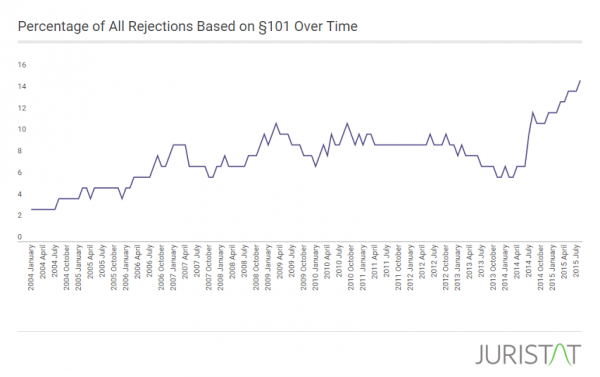Who Is Alice And Why Is She Driving Patent Attorneys Mad As Hatters?
Every so often, the Supreme Court hands down a case that causes a seismic shift in our legal system.

Come with me down the rabbit hole, won’t you?
Every so often, the Supreme Court hands down a case that causes a seismic shift in our legal system. Constitutional law professors wax poetic about Marbury v. Madison and McCulloch v. Maryland. News analysts loudly denounce Citizens United: “Corporations aren’t people!” But ask a patent attorney for an example of such a case and you are likely to witness a ten-minute diatribe on the shortcomings of Alice Corp. v. CLS Bank Int’l (2014).

Is The Future Of Law Distributed? Lessons From The Tech Adoption Curve
Some Basics
Before we get to Alice, however, it’s important to cover a few basics of patent law. Under section 101 of Title 35, one may receive patent protection for any process, machine, manufacture, or composition of matter. Precedent provides three exceptions to these generally accepted subject matter: laws of nature, physical phenomena, and abstract ideas. It’s this last exception that is causing so much grief.
Background
This all started back in 2010 with a case called Bilski v. Kappos. In that case, the Supreme Court confirmed that software patents are eligible for patent protection. In doing so, it utilized the machine-or-transformation test. Under that test, a claimed process is patent eligible if: (1) it is tied to a particular machine or apparatus, or (2) it transforms a particular article into a different state or thing. Although the Court utilized the test, it held that it is not the sole test for determining eligibility.
Sponsored

Early Adopters Of Legal AI Gaining Competitive Edge In Marketplace

Legal AI: 3 Steps Law Firms Should Take Now

How Generative AI Will Improve Legal Service Delivery


Early Adopters Of Legal AI Gaining Competitive Edge In Marketplace
After the equally important Supreme Court holdings in Mayo Collaborative Services v. Prometheus Laboratories, Inc. (2012) and Association for Molecular Pathology v. Myriad Genetics, Inc. (2013), the USPTO issued guidance directing all patent examiners to determine whether: (1) a claim falls under the “law of nature” or “physical phenomena” exceptions, and (2) the claim as a whole recites something significantly different than the judicial exception(s). The Court did not extend this analysis to abstract ideas.
Enter Alice, a case that involved a computerized scheme for mitigating settlement risk (a.k.a. software). The Supreme Court held that claims directed to abstract ideas must have additional elements capable of rendering them significantly more than the abstract ideas themselves. According to the Court, the mere recitation of a generic computer cannot transform a patent-ineligible abstract idea into a patent-eligible invention. In doing so, the Court essentially extended the Myriad and Mayo framework to abstract ideas. Within days, the USPTO issued examination instructions reflecting the decision.
The Aftermath
Now that we have those riveting details out of the way, you might be wondering, “why should I care?” The answer is simple: it’s the reason your colleagues in IP keep bursting in to tears. Take a look at the chart below to see what I mean:

Sponsored

Navigating Financial Success by Avoiding Common Pitfalls and Maximizing Firm Performance

Is The Future Of Law Distributed? Lessons From The Tech Adoption Curve
This line represents the percentage of all patent rejections based on section 101. In May 2014, that percentage was only 7%. By August 2014, it nearly doubled to 12%. As of August 2015, section 101 rejections made up 15% of all rejections issued at the USPTO. That’s a massive increase, especially considering that software patents represent only a small portion of applications handled at the USPTO.
But it gets worse! Seeing as Alice dealt specifically with what patent attorneys call “business methods,” we should look to the parts of the USPTO that handle such applications.

Prior to Alice, section 101 made up about 31% of all rejections in this area. After Alice, that percentage increased to nearly 82%. Let that sink in. The percentage of section 101 rejections increased by 51 percentage points since June 2014! Obviously, patent attorneys aren’t happy. Not only does this make their jobs harder, it makes for unhappy clients.
What Now?
The USPTO is attempting to clarify matters by releasing further examination instructions. Nonetheless, section 101 rejections are still very much on the rise. It’s easier for patent examiners to reject applications than to try and decipher what counts as significantly more.
There is hope, however. Thanks to an odd application of Alice by the Central District of California, McRO, Inc. v. Activision Publishing, Inc. is currently before the Federal Circuit. Many assume this case will clarify Alice. I’m not so sure. Here’s to hoping we wake up and realize it was all a dream.
Juristat’s statistical modeling capabilities allow its users to visually plot their chance of success in every aspect of the patent application process. Ultimately, Juristat offers nearly limitless competitive advantages to its users and their clients.







